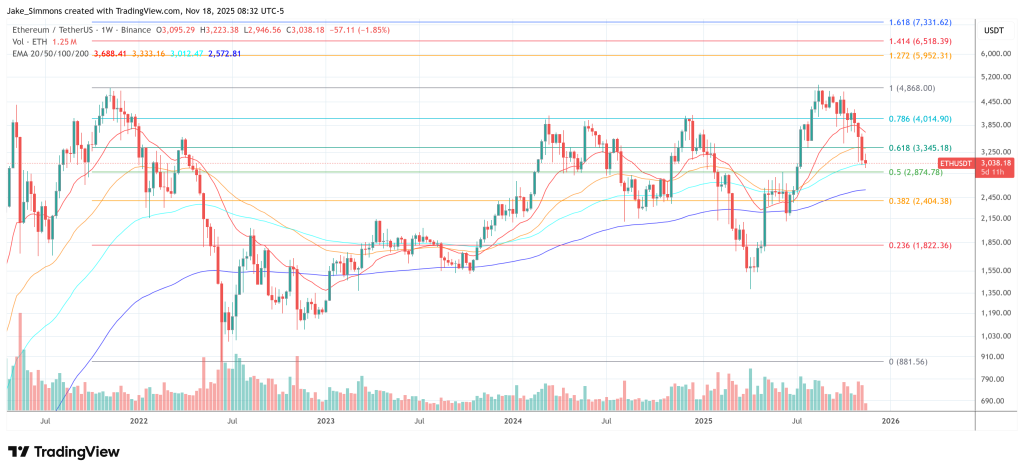If you ask someone on the street what they think of when they hear “Bitcoin,” what do you think they would say? Chances are they would discuss topics around crypto, skyrocketing prices, potential concerns of high-tech hackers, and maybe some thoughts on what they’ve heard about Bitcoin mining.
All of these topics are valid and tie into what Bitcoin is. However, likely, the average person won’t know much more beyond that. It is likely that many people involved in crypto directly may not be aware of the transformational shift in Bitcoin, and what it might be used for in the near future. What they do probably know, however, is that Bitcoin has always stood apart. While Ethereum and the other major chains have diversified their services into what we now see as Web3, Bitcoin has acted more like a timeless monolith, doing what it has always done and mining new coins that have impressive value, but not much else. Bitcoin has had the luxury of not adapting like the other chains simply because it is so incredibly valuable, and seems to still be searching for a ceiling.
The problem with this is that its massive value, well over a trillion dollars, is holding untold potential to be put to work. At the moment, Bitcoin is acting like gold: valuable, an excellent diversification asset, to be hoarded and protected. This is different from something like currency, which can be injected into starting new businesses, building up revenue streams, and working to add value instead of just hoping that the value holds or increases through sheer market demand.
This perception of Bitcoin is finally changing, however, and unlike gold, Bitcoin is proving that it can accomplish both roles: a valuable asset, but also a working asset, especially as Bitcoin price crossed the $100k mark in the recent past. Let’s look at this trend and why Bitcoin is perfect for giving momentum to a large chunk of Web3 businesses, all through the right checks and balances.
Motivation and Reputation
The two key elements that can hold together this entire emerging economy are basic human traits. By giving the participants a chance to earn something they value, Motivation is created. By tracking the perception of good or bad behavior and sharing it with the community, Reputation is created. This has been the cornerstone of not just decentralization, but many online business models. Take Airbnb or Uber. Both rely completely on this balance of motivation and reputation. If you want to rent a house for a few days, you need to pay someone to be motivated to lend it to you, and you are motivated by the often cheaper price and availability to rent an entire home for that short of time. However, motivation is not enough because either party could behave poorly. It’s only the reputation-based counterbalance that ensures all parties will do what they are supposed to do. The renter has a visible reputation as a house guest, and the renter has a reputation as a host. If either tarnishes their reputation, its drop will make it harder for them to participate in the system, and they will lose the service or their ability to make money. While simple, this combination of forces has transformed our world.
Back to Web3, and Bitcoin specifically. This same model is now at work and is allowing Bitcoin’s value to add weight to boost countless dApps. A leading form of this called the Bitcoin Validated Services (BVS) model, was developed by SatLayer and shows the best example of this model at work.
Three Players for Balance
BVS (and other models that might soon follow) solves several different problems. First, Bitcoin’s value is immense and could be used as a “working” asset. Second, dApps on Web3 have a unique challenge in that when they first launch and do not have sufficient liquidity or decentralization, they are vulnerable to a number of malicious threats. BVS solves both of these by setting up three different parties that interact in a balanced way, and the system can be instantly applied in full force to a dApp that is ready to launch.
The first party is the BTC Restaker, who owns Bitcoin and wants to leverage its value to earn rewards. They assign their restaked Bitcoin to the Operator, who performs the critical tasks needed to run the service. This includes having the hardware and software to run the secure environment, ensure a stable connection to the network, and have the expertise needed to run the BVS functions. Finally, there is the BVS Developer, who creates the services that run through the BVS model, making full use of Bitcoin’s value to motivate the various players to operate toward the good of the system.
The motivations and reputations balance themselves in the BVS system. The Restaker is less worried about reputation but is doubly motivated. They earn rewards by staking their BTC and run massive risks if they allow a bad-acting Operator to hold their staked BTC, as it could be forfeited due to bad behavior. The Restaker is motivated by rewards, but their additional motivation is to only work with highly reputable Operators. The Operators are also motivated by rewards, but their entire livelihood lives and dies by their reputation, which they must keep pristine. The BVS Developer is motivated to use BVS so they can run a stable platform and achieve whatever goal they are developing. Their reputation as a quality developer ensures they can connect with Operators willing to work with them.
What Comes Next?
This model ends up looking like a three-legged stool: The various parties balance each other well, creating an incredibly stable foundation for the dApps and other platforms that sit on it. The implications of this are massive for Web3, for two reasons. First, this model is elegantly scalable for the decentralized world. As long as the motivation is high enough, there is no shortage of developers and operators who will learn how to do the job and do it well. Second, over a trillion in Bitcoin offers a nearly inexhaustible amount of weight to fuel this economic engine. We will see what happens over the next year, but as the BVS model is gaining momentum, this growth just might change the industry altogether.
FAQs
What is the significance of Bitcoin in the context of Web3?
Bitcoin has always stood apart from other chains, mining new coins and maintaining its value. However, its massive value is holding untold potential to be put to work, and its role is finally changing, allowing it to be used as a working asset, not just a valuable one.
What is the BVS model?
The BVS model is a leading form of the Bitcoin Validated Services (BVS) model, which solves several different problems by setting up three different parties that interact in a balanced way, allowing Bitcoin’s value to add weight to boost countless dApps.
What are the three players in the BVS model?
The three players in the BVS model are the BTC Restaker, the Operator, and the BVS Developer. The Restaker owns Bitcoin and wants to leverage its value to earn rewards, the Operator performs the critical tasks needed to run the service, and the BVS Developer creates the services that run through the BVS model.
How does the BVS model work?
The BVS model works by balancing the motivations and reputations of the three parties involved. The Restaker is motivated by rewards, the Operator is motivated by rewards and the need to keep a good reputation, and the BVS Developer is motivated to use BVS to run a stable platform and achieve their goals.
What are the implications of the BVS model for Web3?
The implications of the BVS model are massive for Web3, as it provides a scalable and stable foundation for dApps and other platforms, and offers a nearly inexhaustible amount of weight to fuel this economic engine.









